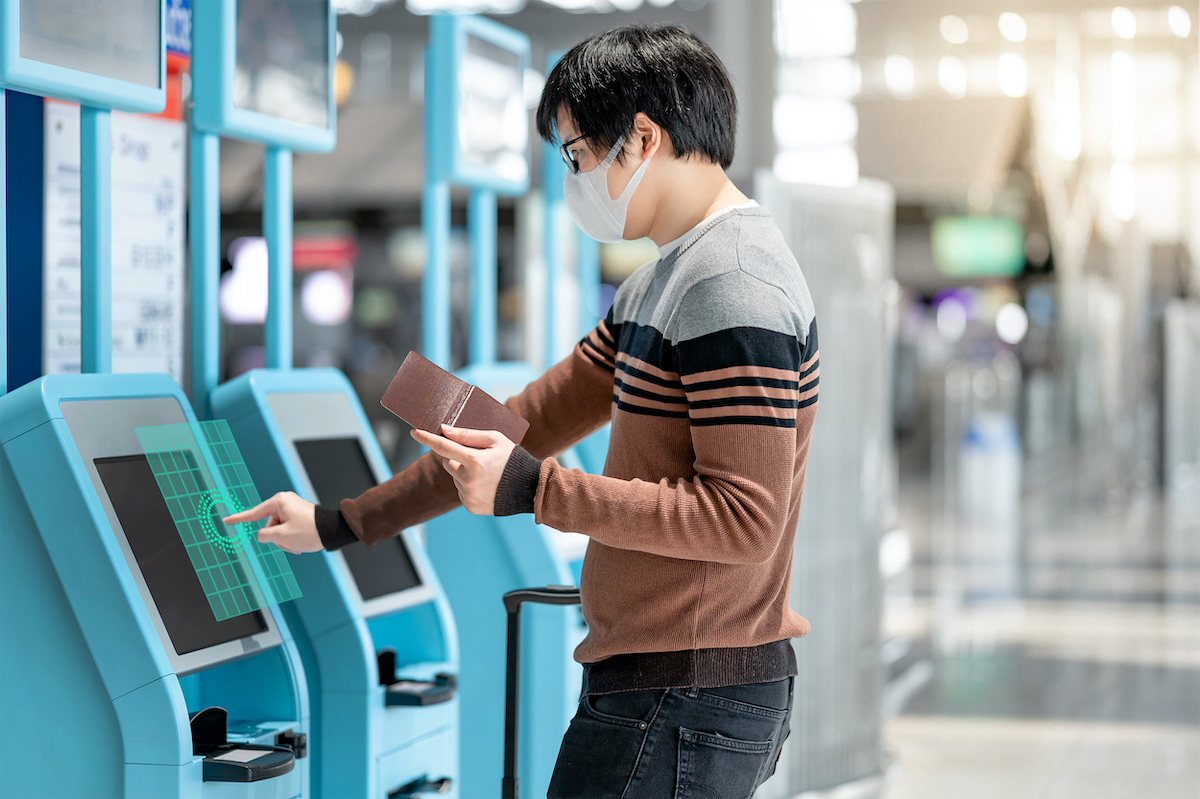
Ultraleap Debuts Free Software To Make Existing Touchscreen Devices TouchFree
October 8, 2020 by Dave Haynes
The UK tech start-up Ultraleap – which markets technology that merges camera-based hand-tracking with haptic feedback – has released free software it says enables existing touchscreens to go touch-free.
The qualifier in that is to make the TouchFree software work, operators will need to add on a $250 camera/sensor or a $90 controller gadget.
The key driver here is enabling kiosks, directories and other touch-based screens out in the marketplace to be useable and safe in the midst of a pandemic that has much of the populace freaked out about touching things.
Ultraleap says recent research suggests 80% of people now think public touchscreens are unhygienic and locations are having to adapt.
Says the company:
TouchFree provides touchscreen emulation by detecting a user’s hand in mid-air, converting it to an on-screen cursor, and supporting interaction methods that users are familiar with. TouchFree is designed to run invisibly on top of existing user interfaces without the need for modifications to existing interfaces and design, means downtime to retrofit is kept minimal, interactions remain familiar, and the system continues to be easy for consumers to use.
Venues like restaurants, train stations, hotels, museums and airports rely heavily on public touchscreens and kiosks to help reduce transaction time, enhance shopping experiences and handle higher volumes.
Steve Cliffe, CEO at Ultraleap, said: “Conventional touchscreens have worked well over the years because of their convenience, but people want to be able to interact with them in ways they perceive to be safe. Our recent research showed that just 50% of consumers were likely to use touchscreens again. TouchFree is the ideal application to retrofit existing touchscreen-based kiosks for businesses looking to encourage users back, maximise user interaction and ensure customers feel safe.”
Ultraleap has collaborated with 20+ global kiosk makers, brands and agencies to perfect the application and make it real-world ready including Cortina Productions and Intuiface.
Jim Cortina, Principal and Director of Development at?Cortina Productions?and early adopter of TouchFree, said: “We’ve received many requests from our museum clients to turn their touchscreen exhibits into touchless experiences, and fast. TouchFree gives us a viable and customizable solution to interact in a safe and engaging way.”
TouchFree is available to download for free here.
The specs:
-
Ultraleap Leap Motion Controller or Stereo IR 170 camera module
-
Windows® 10, 64-bit
-
Minimum Intel HD Graphics 530
-
Intel® Core i5/i7 processor
-
4 GB RAM
-
USB 2.0 port
So you have to be on Windows and use a fairly substantial PC (i5/i7), which limits the field on who wand what might use this.
Ultraleap is a hybrid company formed in the business marriage of Leap Motion, which develop hand-tracking controllers for the consumer market, and Ultrahaptics, which developed haptic feedback technology using air to enable consumers to sense controls and shapes in mid-air.
I am wildly ambivalent about the legs of this sort of thing. It is definitely interesting, but requires a learning curve and widespread understanding and adoption to be viable. If you watch the videos on this, you can see it’s all a bit finicky even when done by people on camera who are on there to show how easy it is.
To counter-act that, the company has published design guidelines that encourage calls to action and visual demos on the attract screen.
But you know in a world conditioned to touchscreens that many people will just walk up and start boinking away at the screen.
I do like that the idea here is not to tear out what enables existing kiosks, but add this on. The application and service looks well-considered.
However, there’s a capital cost and a deployment/retrofit cost to this at a time when many retailers and venue operators are running on revenue and operating capital fumes. Will operators want to spend the additional hardware and labor costs to make their inventory touchless?
Or will they just make hand sanitizer available nearby, at a fraction of the cost?
I DO think there are good business applications for this in circumstances where the same sets of people are using these devices all the time, and where touch is a problem. Think about screens in point-of-care medical environments. And think about those keyboards and related hardware you have seen in places like automotive service stores – black from all the gunk on user fingers.
I guess the fundamental question is: Is something that makes an activity a little safer healthwise worth it, when it in turn makes that activity a little slower and a little harder to use?



Hi Dave!
I think you may have misread their web page. The TouchFree software requires the Ultraleap Leap Motion Controller OR Stereo IR 170 camera module, not AND.
We tested both the already existing Leap Motion Controller (more consumer-grade) and the new Stereo IR 170 module (more professional-grade, wider FOV, made for kiosk integrators) and can confirm both devices work with TouchFree, and with Intuiface 😉